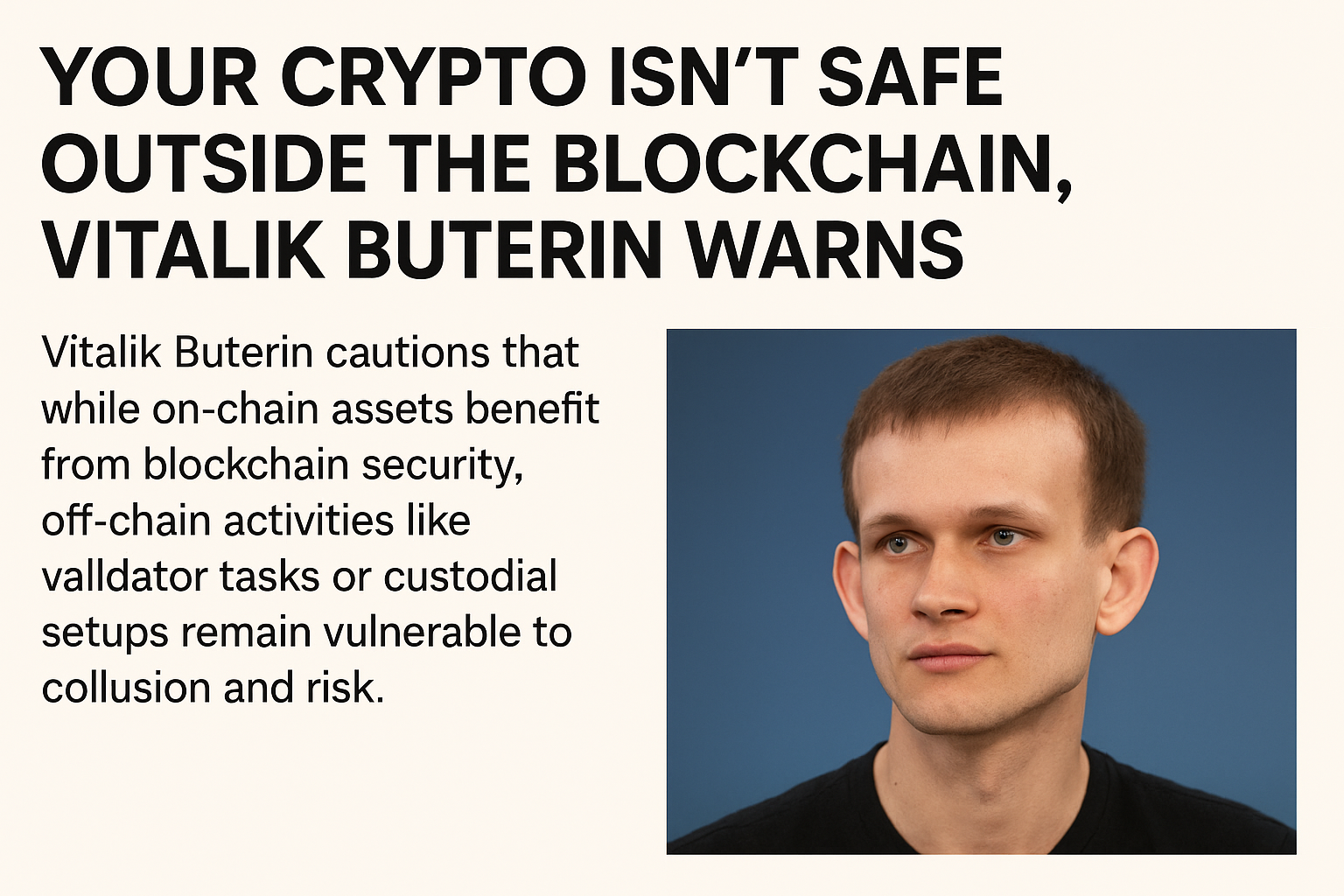Ethereum co-founder Vitalik Buterin has issued a new warning that’s resonating across the crypto community: blockchain security only protects what stays on-chain. While decentralized networks have proven resilient against direct attacks and manipulation, Buterin emphasized that off-chain components — from validators to custodial platforms — remain potential weak points that can undermine user safety and trust.
The Illusion of Total Security
For many crypto holders, blockchain technology itself represents the pinnacle of digital security. Every transaction is recorded immutably, cryptographic consensus ensures integrity, and decentralization removes single points of failure. However, Buterin stresses that this sense of safety can become deceptive once assets or activities leave the blockchain environment.
In a recent discussion highlighted by Cryptonews, he explained that “many people conflate blockchain-level security with overall system security.” In other words, your wallet’s private keys, staking operations, or even validator coordination can still fall prey to human errors, organizational collusion, or technical loopholes that the blockchain itself cannot prevent.
Off-Chain Risks: From Validators to Custodians
Buterin drew particular attention to validator networks and custodial setups — both of which involve human or semi-centralized control. Validators, while critical for proof-of-stake operations, must rely on off-chain coordination and governance, creating openings for dishonest behavior or software exploits.
Similarly, crypto custodians — exchanges, lending platforms, or wallet providers — hold large volumes of digital assets on behalf of users. These entities often operate off-chain and depend on internal security practices, making them susceptible to insider threats, poor key management, and even regulatory overreach.
The downfall of major exchanges over the past few years has made Buterin’s warning especially poignant. “Even if the blockchain remains intact, the weakest link is always the human layer,” he said.
The Challenge of Bridging Worlds
As decentralized systems evolve, many projects increasingly rely on off-chain computation and cross-chain communication — think of oracles, layer-2 rollups, and bridges. While these technologies enhance scalability and efficiency, they also create additional trust dependencies outside the pure cryptographic guarantees of blockchain consensus.
Bridges, for instance, have become one of the most common attack vectors in DeFi. Hackers exploit their smart contracts or validator configurations to siphon hundreds of millions in digital assets. Buterin has long argued that until such systems become more transparent and mathematically verifiable, users should remain cautious.
A Call for Crypto Realism
Buterin’s message isn’t one of pessimism but realism. He encourages developers and investors to recognize that true decentralization doesn’t stop at code. It extends to governance, custody, and user education. Improving off-chain transparency, minimizing trust assumptions, and adopting cryptographic proofs wherever possible are key steps toward a safer crypto ecosystem.
For everyday users, his advice is simple but crucial:
-
Self-custody is safer than leaving assets on centralized platforms.
-
Multi-signature setups or hardware wallets provide better control.
-
Staying informed about how off-chain systems work helps avoid false confidence.
Vitalik Buterin’s warning serves as a timely reminder in an industry often driven by hype and innovation. Blockchain technology offers unparalleled transparency and trustlessness — but only within its own boundaries. Once we move beyond those digital borders, we re-enter a world still governed by human incentives, coordination, and fallibility.




